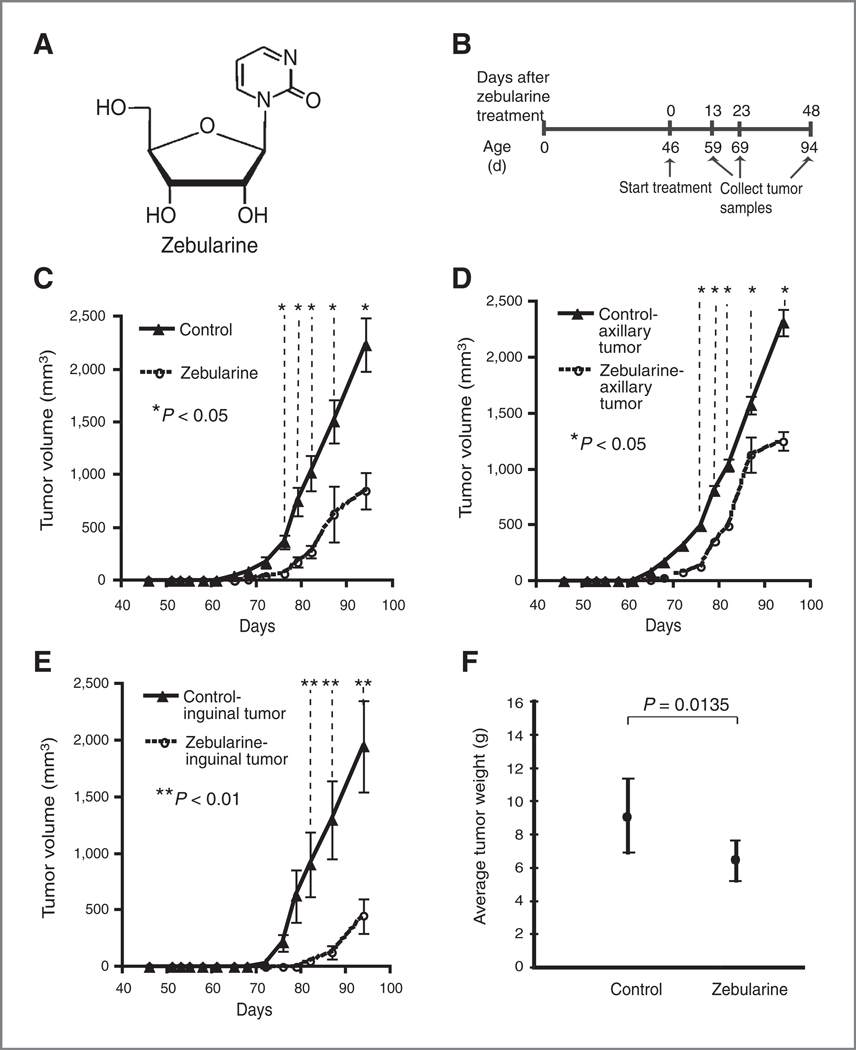Figure 1.
Effect of zebularine on tumor growth in MMTV-PyMT transgenic mice. A, chemical structure of zebularine. B, schematic representation of zebularine treatment. Cohorts of female MMTV-PyMT mice (n = 50) were monitored for onset of palpable mammary tumors and size of the tumor. At 46 days of age, the mice were randomized into control and zebularine-treated groups (n = 25 each). For zebularine treatment, mice were treated via solubilizing 5 mg/mL zebularine in sucrose-supplemented water. Control mice received sucrose-supplemented drinking water. C and D, delay of tumor growth in zebularine-treated mice. C, the average tumor volume for both axillary and the inguinal tumors were calculated for zebularine-treated (n = 10) or control (n = 10) mice. The data for the first axillary and first inguinal tumors is shown. D, the average tumor volume for axillary tumors was calculated for zebularine-treated (n = 10) or control (n = 10) mice. Only the data for the first axillary tumor detected in each animal are shown. E, the average tumor volume for inguinal tumors were calculated for zebularine-treated (n = 10) or control (n = 10) mice. Only the data for the first inguinal tumor detected are shown. Triangles and circles represent mean tumor volume for control and zebularine-treated mice, respectively. Bars represent SD. F, ten mice in each group were treated to 94 days of age at which time they were sacrificed, and the total tumor burden was excised and weighed and presented as mean ± SD. The total tumor burden for the control and treated animals was compared by Student t test. P values are shown in C to F.

